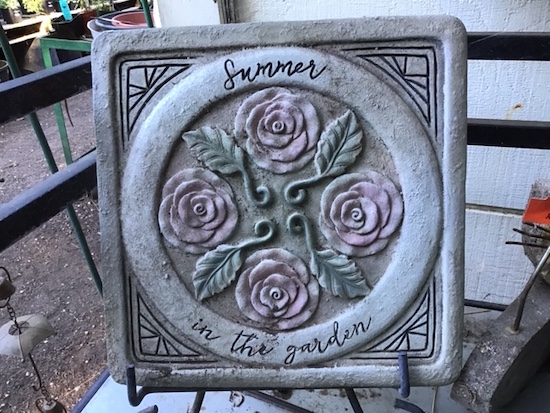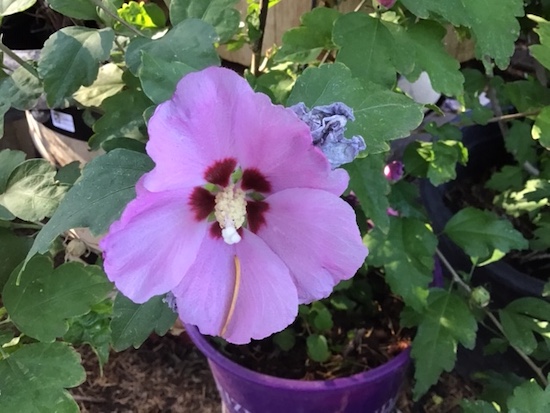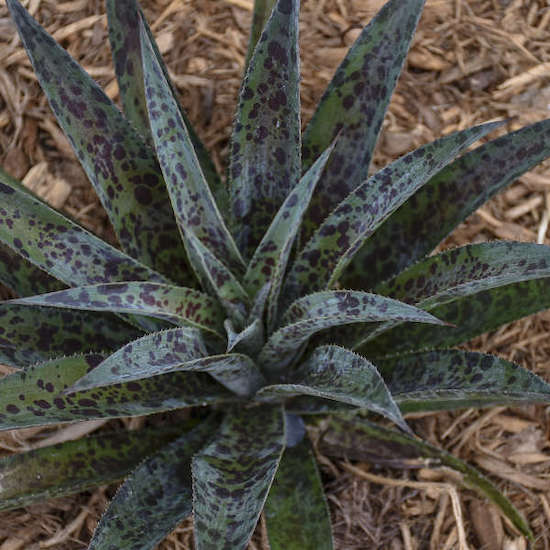August 2020 Newsletter

Another month has rolled by, and as predicted, it is hot. Plants are drying out more than usual with the high temperatures, long days, and afternoon winds. Fear not, although August still brings high temps and wind, the days are getting shorter, and the sun will not be as strong. We are still experiencing higher than normal sales considering every day has reached the 100-degree mark more or less.
August is the month we toss out any remaining summer vegetable starts and start bringing in ‘cool’ season starts for your edible garden. If you plan on growing from seed, then it is time to start broccoli, cabbage, brussels sprouts, and cauliflower indoors to plant next month. These take a little longer as they make heads as opposed to collards, spinach, lettuce, and kale that do not. However, if you have space, you can start those also. I think it is best to sow lettuce, radish, carrots, and beets directly in the ground but wait until next month to do so. Our regular seed company is back up and running, so we have the seed in stock now. New this year is Cornucopia is offering about a dozen varieties of organic seed at a good price.

I think the most common questions being asked this year are about fruit set on squash and tomatoes and disease on tomatoes. Squash Mountain is growing great but so far very little production. (For those of you who are wondering what is Squash Mountain it is our toss pile that we grow pumpkins and squash in at the nursery.) Looks like lots of male flowers, I believe we have plenty of bees and blossom end rot is taking a lot of the squash that does start. It is normal for male flowers to show up 10 days or so before you have your first female flowers so maybe I am just impatient. After all, nothing loves to flower when the temps are 100 degrees. They say blossom end rot (squash starts to grow then turns yellow and dies or your tomato turns brown beginning at the flower end) is really all about inconsistent moisture levels in the soil that causes the plant to not be able to access calcium, so let’s hope as the days get a little shorter our beds will not be drying out as fast. Calcium sprays will help. Inner and older leaves will turn yellow and die due to being shaded by the rest of the plant. Overall or excessive yellowing of older leaves is a nitrogen deficiency. Just in case you do have a more serious problem, the following are other issues.
- Early Blight- little brown spots that grow outwards. Remove infected leaves. Caused by Alternaria sp. that can live in soil so plant in another spot next year.
- Septoria Leaf Spot- Another fungus that causes small spots with light centers and a dark edge. Get rid of infected leaves and do not plant there next year. Try not to overwater and make sure there is plenty
of air circulation. - Fusarium Wilt- Let’s hope you do not have because you will have to plant tomatoes resistant to it or remove soil entirely. This causes overall wilting, often seen in half of the plant first, and death.
- Anthracnose- This is new to me because some of my trees get this, but I did not realize my tomatoes could also, and reading up says it is pretty common. Leaves get sunken spots and will eventually rot the plant. Luckily for us, it thrives in hot wet weather, and we only have half that equation. Again rotate crops.
- Bacterial Canker- Browning of the leaves and yellowish closer to the center of the leaf. It can spread quickly. Get rid of the plant. Spray with an organic fungicide. Do not plant there for three years. This is caused by infected seed.
- Verticillium Wilt- Leaves become yellow and dried. Mostly happens in cooler conditions. If this is the case, you will have to look for resistant varieties in the future and try not to plant any nightshade family food there for four years.
- Late Blight- Starts drying of older foliage first, often starting at the bottom of the plant and inner leaves. Remove infected foliage and even the whole plant before it spreads to its neighbors. Fungicide can help. This is caused by Phytophthora sp. and caused the 1845 Potato Famine.
- Tobacco Mosaic Virus- Do not smoke in your garden, and it is recommended that you wash hands after smoking as you can spread this nightshade family disease just by touching. Stunted growth, brown spotty, uneven ripening fruit, viral looking leaves.
- Fruit Cracking- I always thought this was caused by too much water, but I read light, moisture, temperature, or nutrient deficiency in the plant causes a stressed fruit.
So the lesson here for prevention is, make sure you have plenty of air circulation between plants, try to keep them not overly wet or overly dry, keep water off the leaves, keep foliage from contact with the soil, rotate your crops and remove any questionable growth as soon as possible. A lot of these diseases are more common in wet humid conditions. If you want my opinion, Lake County is just a difficult place to grow. I think it is a combination of our elevation (stronger sun rays) and hot temps only lead to a lot of plant stress.
My Crepe Myrtle is not blooming: This is another question we have received a few times recently. Research says there are four reasons for this.
- Pruning too late- I did not think this is an issue unless you went ahead and did pruning on it in late spring or after. They bloom on new wood. However, any pruning for reblooming should be done by August 1st so as not to invite winter kill on young growth.
- Branching too crowded- Does not allow enough light into the tree. Prune after bloom time by thinning out some of the branches.
- Fertilizer- Not enough phosphorus or too much nitrogen will cause it not to bloom. Bone Meal or 0-10-10 can help with the phosphorous issue, and heavily fertilized lawns and garden beds can have too much nitrogen in them, causing nice foliage but no flowers.
- Lack of Sun- Crepe Myrtles need plenty of light and sun to bloom properly.
We are still having a lot of supply issues with orders taking weeks to get here, and when they do, a lot of things are zeroed. UGH! We turned everyone on to the Raised Bed Bales, and now they cannot get the raw materials to produce it. We are getting our Green-All Organic Potting Soil pretty consistently, so that is good. We are out of Fish Emulsion RTU Copper and Calcium and just keep re-ordering it, hoping it will come. Our ladybug order is taking longer than usual. There is a terra cotta shortage, and companies are out until new shipments arrive. We have an order placed already for when it does come, but it is looking like at least mid-month, and that is if we are lucky. So far, shortages are on the dry goods end of things, and except for Redwoods, which are hard to get due to the high demand after all our fires, we are still able to get lots of great blooming perennials and shrubs for you.

Looking for late-blooming perennials? Some of the best are Rudbeckias, Asters, Goldenrod, Russian Sage, Echinaceas, and Caryopteris. All are in stock now. Still blooming perennials that go all summer are Gaura, Gaillardia, Coreopsis, and Agastache. The 4-inch perennial pots are 20% off this month. Our grasses are looking good for a real flavor of fall, our crape myrtles are (mostly) blooming, and the Rose of Sharon has begun its show.
August Specials
- Mangave-$19.99 each
- 4-inch perennials 20% off
- Peonies 20%off
Plant of the Month
Mangave

I was looking over a supplier’s availability list and saw Mangave. Well, I did not know what it was. So I looked it up and decided to go all in for the month of August’s Plant of the Month. After all, succulents are in vogue. These are hybrids of Manfreda and Agave, accidentally discovered by Manfreda seed collectors. Some grew bigger, and they realized they had crossed with nearby Agave. More crossing and testing, and now several hybrids are available to us. Manfreda, aka the Texas Tuberose, is like a small agave with fleshy, purple blotched leaves that die back in winter. They produce a spidery hummingbird attracting flowers every year.
Research indicates once the Mangave blooms, it will die like an agave but will produce offshoots, so you are not at a total loss.
Mangave does not have the thorns of agave and can grow much faster. They have interesting colors and patterns from the Manfreda, can average take water for faster growth, are drought resistant, like 6 hours of sun, look great in containers, grow in poor to average soil, and are deer resistant. They are rated to Zone 9, and to be safe, we are a zone 8, but they can be brought inside if necessary. You can manage their size by withholding water. We ordered a few different varieties in #2 containers, and they will be $19.99 each for the month of August. We will see what actually arrives, and I am guessing the regular price to be around $29.